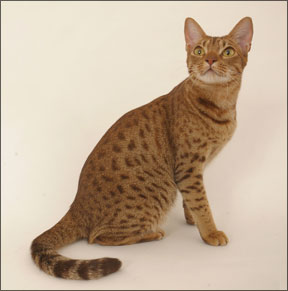Dear Elizabeth, When I was in my veterinarians office last week I noticed Lilys record on the examination table. I felt a bit guilty – but I couldnt help reading the record. Most of it was in medical-type language, so I couldnt really understand it, but I noticed Lilys description was typed, “SF DSH Mackerel Tabby.” When Dr. Lucas came into the room I was too embarrassed to admit that Id been peeking at Lilys record so instead of asking her, Im asking you, Elizabeth: What does that description mean? In particular Im curious about the mackerel tabby part; Ive always called Lily a tiger cat, which I think is another name for tabby … but mackerel sounds fishy! 288 Thanks so much for your good question. First of all, Id like to relieve your mind about peeking at Lilys record. Although Dr. Lucas owns Lilys medical record, she is required to provide you with a summary or a copy any time you like. My opinion is that, as Lilys health care advocate you should do more than peek: You should have a copy of her record at home, especially if she has any medical issues or a chronic illness. You never know when you may need to have Lily seen at a different office; shell receive better care by another veterinarian (at an emergency clinic or if youre traveling, for example) if you have a copy of her medical record with you. Now, about that cryptic description: “SF DSH Mackerel Tabby.” After all the time Ive spent as the Official Spokes-cat for the FHC, Ive learned a bit of medical lingo! SF is what I am: a Spayed Female. DSH is me again: a Domestic Short Hair. I admit I had to ask about the Mackerel Tabby part! My colleagues at the FHC explained that tabby is the general term used to describe a striped cat. All tabby cats have beautiful, pencil-thin, regularly spaced stripes on their faces. If you admire them carefully, youll notice that the forehead stripes look like the letter M (for Marvelous, of course!). Another detail shared by all tabby cats is more subtle: If you look at individual hairs youll see that each one has alternating bands of light and dark coloration. This color banding of individual hairs is called Agouti. Feline admirers have divided tabby cats into subcategories based on additional coat pattern details. The most common system divides tabbies into Classic, Spotted, Agouti and Mackerel. Classic tabbies have a bold circular pattern to their stripes, producing a bulls-eye on each side of the body. Its a beautiful pattern that reminds me of a marble cake. Spotted tabbies are quite uncommon in the general cat population; a few breeds – including Egyptian Mau and Ocicat (pictured above) – have the characteristic spotted pattern over their bodies along with the tabby forehead M. Agouti tabbies are also called ticked tabbies. Abyssinian cats have the agouti coat pattern, showing an overall ticking with distinct stripes present only on the forehead. Finally, to Lilys description: Mackerel is the most common type of tabby coat pattern, and in my opinion, the most beautiful. Mackerel tabbies are blessed with perfect thin parallel stripes over both sides of their bodies; this linear array reminded someone of fish scales, which explains the unlovely term, mackerel tabby. Although not perfectly correct, Id forgive you for continuing to call your lovely mackerel tabby, a tiger cat. Regards to Lily! Love, Elizabeth



